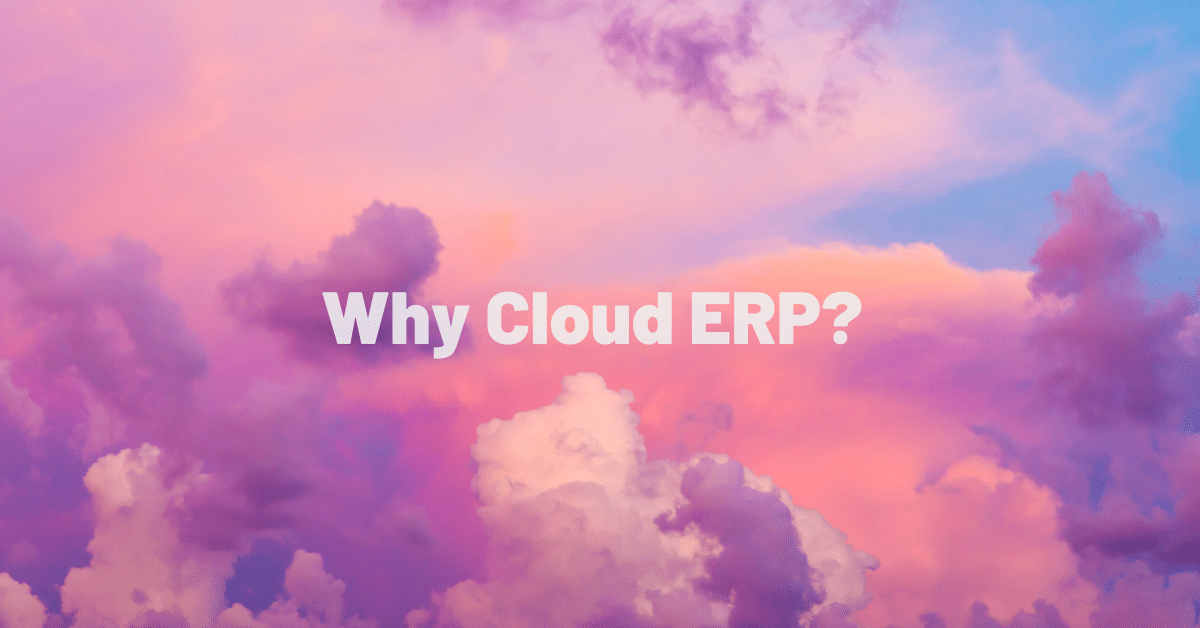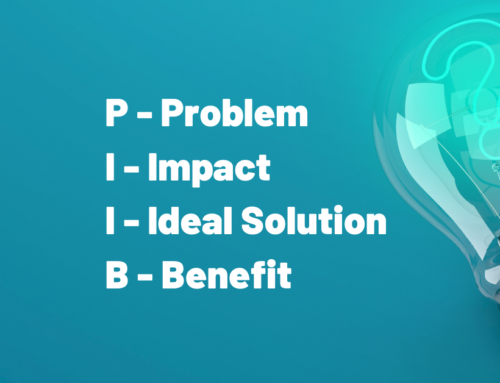Why choose a cloud ERP? Why not?
Your business should be ready for what life throws at it
We’ve all now seen how unpredictability can upend a business. We have had to rethink the way we work and live over the past several months. Flexibility in an uncertain environment is key. So, if you’re looking at changing things about your business to make it more competitive, modern, and flexible, why not consider a cloud ERP system?
Remain relevant and competitive
If you want to remain relevant and competitive in the changing business landscape, one great way to do that is to look at cloud-based solutions, like Acumatica Cloud ERP. But you may be asking yourself, why cloud? After all, that has been the question as recently as ten years ago – many businesses have viewed cloud as a risky and unproven proposition.
Be on the leading edge, but not the bleeding edge, with cloud technology
However, the same concerns don’t hold much weight today. Cloud is now mainstream technology. Unfortunately, many companies, some major ERPs included, lag behind in adoption and deployment of cloud-based ERP platforms due to those residual concerns.
Cloud is now on the leading edge, not the bleeding edge. The time to get on a tried and true technology is now. Still not convinced? Here are 6 reasons your business should be considering a cloud system like Acumatica Cloud ERP.
1. Cost
Your business is going to have different needs, requirements, and resource availability than any other business. Because of this, what makes cloud make sense for you may be different than what makes sense for others. Working with a consulting team can help you sort out how to make an ERP work for your needs and your budget, but here are some cost savings you could see with the SaaS (Software as a Service) model an ERP like Acumatica uses.
- Infrastructure: If your system is in a multi-tenant cloud, it alleviates your need for in-house infrastructure and the maintenance and support that goes along with it. The majority of your data will reside in the cloud. Your need for servers and all that comes with normal in-house setups will decrease.
- Upgrades: Don’t you hate the painful and costly upgrades that come with ERP systems? Acumatica releases its upgrades every six months in smaller, automatically applied doses in the cloud. This keeps you current, and it’s also included in your subscription costs. Say goodbye to unplanned or surprise expenses that happen every few years with so many other ERPs.
- Maintenance: Do you balk at the idea of paying for something in “perpetuity” via subscription? Just because you buy an on-premise subscription, that doesn’t mean you’ll avoid any recurring fees. Even with an on-premise software, you’re going to pay maintenance fees annually to the tune of 20-30%. In some cases, your maintenance fees could cost as much as what you would pay in a SaaS model. Think you might go off-maintenance to save money? That’s a major risk that will inevitably lead to costly customization and consulting, or even worse – starting over from scratch and losing your initial ROI.
2. Security
Mid-market businesses are not taking security seriously enough. They think that safeguards are overkill and that their businesses won’t be targets. That’s incorrect. Small and Medium sized businesses are being attacked daily and the results are catastrophic.
In this age of information, when your systems are down, your business is down from the top floor to the shop floor. While it may feel safer to house your servers in that spare closet space in your offices, it’s a false sense of security. Is your money safer stuffed in your mattress at home, or in a bank? It’s not different with your data.
Amazon Web Services (AWS) spends more time, money and manpower than you ever could on the security of its cloud. Gartners’s Magic Quadrant for Cloud Infrastructure and Platform Services has ranked AWS number 1 for 10 straight years. On both its vision and ability to execute it, it outpaces the field, including Microsoft, Google, and Oracle. It’s not even close.
3. Flexibility
The 2020 COVID-19 global pandemic exposed which businesses had the infrastructure in place for flexibility and which did not. Cloud is essential to running a business in an “any time, in any place, on any device” world. Whether your business has been significantly impacted or not in 2020, you probably know where your business stands and the lesson applies either way. Let’s back up to pre-2020. What was the one of the biggest challenges businesses faced? It was the labor and skills gap. Does your business have the flexibility to maximize its current workforce while also seeking and engaging with talent that isn’t geographically tied to its HQ?
By proliferating access to your systems, you create a flexibility that allows for better reaction time to client demand. The speed of your information translates into speed of your execution. And the speed at which execute will be a huge determining factor in your ability to compete now and in the future.
4. Mobility
Mobility goes hand-in-hand with flexibility. We already mentioned doing business in an “any time, any place, any device” world. Cloud is the backbone of flexibility and mobility is it’s eyes, ears, hands, and feet. Increased physical access to data has a two-fold impact.
- Real-time access will improve the input of information into your system. Reducing lag time between an action and a corresponding data point adds up to better accuracy and fewer errors.
- Improved real-time information allows for better and quicker decision-making. These effects can be felt in the board room and in the field or shop floor.
The personal technology experience is outpacing the work technology experience. We rely on mobility technology delivered primarily by our phones and tablets in our personal lives. 25 years ago, a weekly trip to a brick and mortar bank would have been normal. 10 years ago, a weekly trip to an ATM would have been normal. Today, we personally bank and transact purchases without going to the bank in person for months, maybe years at a time. In fact, some banks are completely mobile, with no brick and mortar locations at all. What does banking have to do with cloud technology, you ask? It represents a realized accrual of time given back in our personal lives. Mobility could be driving the same improvements in the workplace, where businesses are always trying to find more time and reduce waste.
5. Insight
“Digital Transformation,” while a bit of a buzzword, means that you are adopting digital technology to transform your services, products, and business processes. You do this by replacing non-digital and manual processes where possible. These changes are rooted in data. First, you need to capture the data to figure out what you need to change. The challenge then comes when you need to do something with the data. Avoiding that is what we call “paralysis by analysis.” When you have the flexibility and mobility to collect and receive data where and when you need it, to the proper recipients, you’re enabling yourself to make better decisions. When you enable better decision-making, you’ll achieve insight. You need to know what’s going on in your business at a moment’s notice. Imagine being able to answer the following questions:
- Where are our parts?
- Are we over capacity or under capacity?
- What is our order backlog?
Key performance metrics, executive dashboards, and automated workflows are all tools that can deliver business insight in a meaningful way. Getting by on spreadsheets, hustle and educated guesses will not help businesses maintain a competitive edge in today’s landscape. What data are you consuming? Can you trust it? Do you have it when you need it? When it comes to business data, you are what you eat.
6. Scalability
The vast majority of business owners would say they want to grow their business. But, can you? Certainly, if the orders are there, to some degree it can be willed into place. But, if you don’t have the right infrastructure in place to begin with, it’s questionable if you would find your business in the situation to grow at all.
With the Acumatica Cloud ERP, growth is supported in near real time. New users, new sites, new entities are not system limitations and can be supported as needed. And with Acumatica’s pay for what you use model, it’s as painless a transition as exists in the business systems industry. With the cloud you don’t need to procure and configure servers and pay for costly setup and delivery of that infrastructure. Put simply, the infrastructure comes with you. If you need it, you tap into it.
The sum of these 6 parts equals a competitive business streamlined for the future. As mentioned earlier, every business is different. But many will find, for these reasons, that cloud is the way forward for their business systems and processes. And when it comes to cloud systems, Acumatica Cloud ERP is the most proven cloud solution for mid-market business. It was written in the cloud, not pivoted into the cloud with clunky system re-writes like many legacy systems are attempting to do to varying degrees of success. Leveraging AWS’s world class public cloud assures clients that they can depend on the system uptime, security, and longevity. Acumatica’s customer centric business model takes to heart the real world ways in which businesses do business and grow.




